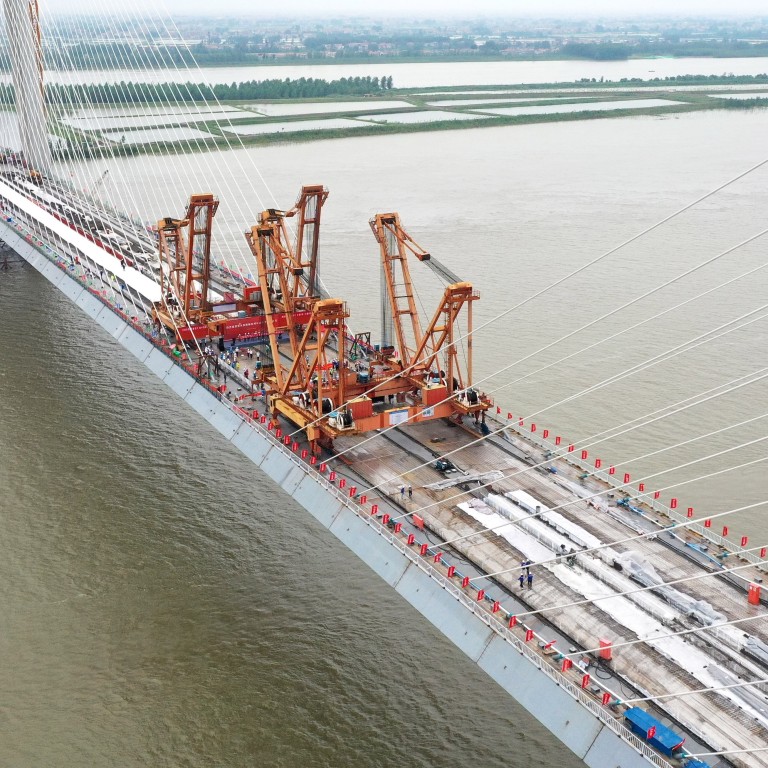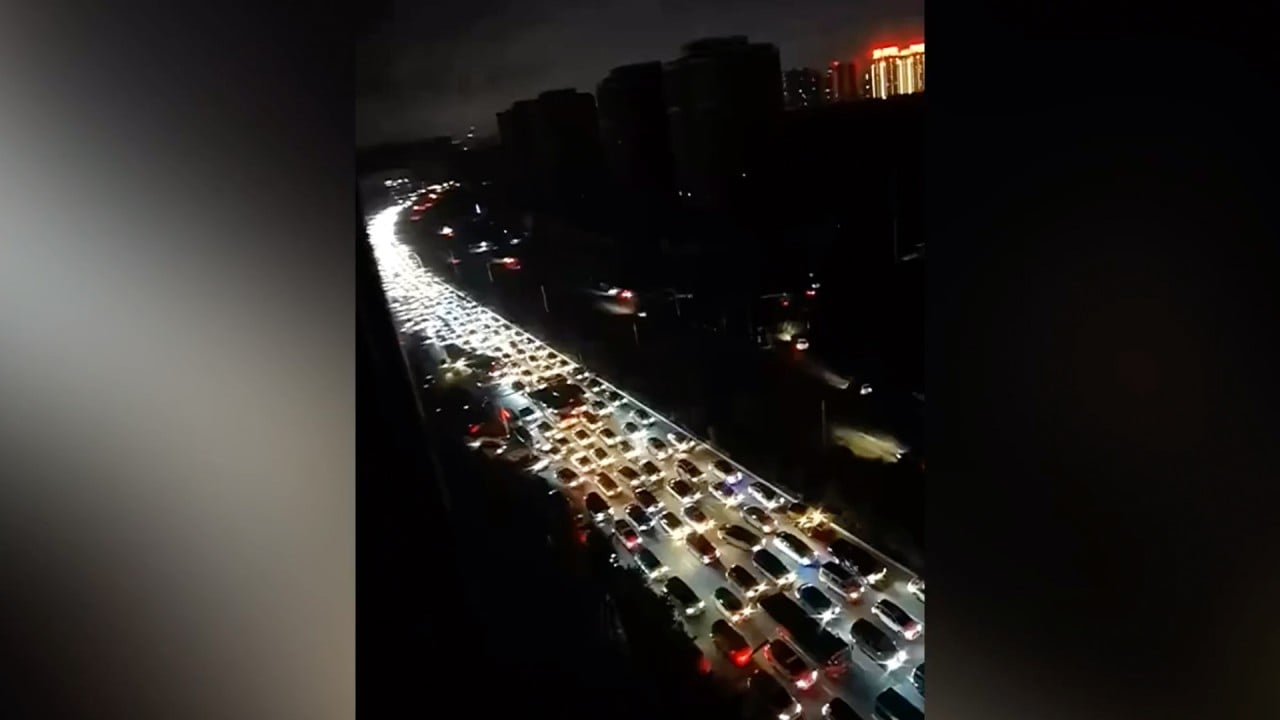
China’s new infrastructure has carbon-intensive supply chains, Greenpeace says
- New infrastructure includes 5G technology, artificial intelligence, electric vehicles and high-speed railways
- Such industries could affect the country’s efforts to cut emissions
“The majority of new infrastructure’s emissions come from upstream and downstream industries,” said Zhang Kai, deputy programme director in Greenpeace East Asia’s Beijing office. “As long as the whole new infrastructure supply chain relies on China’s high-emissions energy mix, cutting emissions here will be a struggle.
“This impact needs to be addressed holistically.”

01:36
Power crisis in China leaves highway in the dark
Beijing has not published any overall scheme to lower emissions, but local governments and industries such as steel have their own carbon pledges.
According to the Greenpeace report, emissions from China’s new infrastructure industries were 7.24 per cent lower than in traditional infrastructure.
Although policies on new infrastructure had improved, there had been few considerations for “greenness and inclusiveness”, the report said, adding that further policy support was needed.
“More detailed development norms and industry guidelines still need to be drafted,” it said.
“In order to achieve better energy saving and emission reduction effects, investment decision-makers of new infrastructure should focus on energy efficiency optimisation in the supply chain’s upstream section.”

